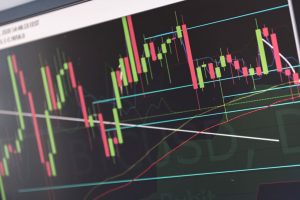
Key Predictions and Investment
Introduction: Why 2025 Matters for Investors
With the onset of 2025, investors are observing the stock market with increased anticipation. The year 2025 is set to bring with it both challenges and opportunities, following a number of years characterized by economic uncertainty due to inflation, rising interest rates, and global disruptions. Key Predictions and Investment stock market will respond to changing macroeconomic trends, such as the easing of monetary policies, geopolitical changes, and fast-paced technological progress.
Amid turmoil, investors seek clarity, rendering timely insights more precious than before. No matter if you’re a veteran trader or an inquisitive novice, it’s essential to grasp the factors influencing the market in 2025 to make well-informed choices. This article provides essential forecasts for the stock market and practical investment advice suited to the current dynamic environment. We will help you with Key Predictions and investments for enduring success in a rapidly evolving financial environment, from analyzing sectors to adjusting your strategies.
Macroeconomic Overview: What’s Driving Market Behavior, Key Predictions, and Investment
<p><p>In 2025, the stock market will be significantly influenced by macroeconomic indicators, including GDP growth, inflation rates, and interest rate policies. The global economy is stabilizing, though not uniformly, after a turbulent recovery from the pandemic. In the U.S., it is anticipated that the Federal Reserve will take on a more dovish position, with possible interest rate reductions intended to spur growth. Meanwhile, there is a renewed demand in global markets, particularly within emerging economies such as India and Brazil.

Although inflation remains a concern, it is gradually alleviating due to enhanced supply chains and balanced energy markets. The interplay of these factors generates a setting characterized by careful hopefulness. It is recommended that investors monitor quarterly economic data, central bank statements, and employment figures closely, as these will remain essential indicators of market direction throughout the year.
Sector Spotlight: Technology and AI Lead the Way
<p>In 2025, technology continues to be a prevailing influence, with artificial intelligence (AI) taking on a revolutionary function in various sectors. Businesses across various sectors—from chip manufacturers to SaaS platforms—that are incorporating AI into their operations are attracting the attention of investors. Cloud computing, cybersecurity, and quantum technologies are also becoming more prominent.
But it’s not only about eye-catching innovation; the basics are still important. Companies should be assessed by investors according to their earnings growth, competitive advantage, and investment in R&D. It is anticipated that the technology industry, particularly AI-driven startups and established companies implementing automation, will surpass the performance of the wider market. However, volatility continues because of regulatory scrutiny and elevated valuations.
Green Energy and Sustainability: Growth with a Purpose Key Predictions and Investment
By 2025, sustainability will have evolved from a mere buzzword into a significant market driver. With governments and corporations intensifying their climate commitments, clean energy stocks are gaining increased attention. As the world moves toward net-zero emissions, companies specializing in solar, wind, and battery technologies are drawing unprecedented levels of investment. In the U.S., the Inflation Reduction Act, along with comparable policies in Europe and Asia, supports green infrastructure and renewable projects.
Investing in ESG (Environmental, Social, Governance) is also evolving, providing greater transparency and evaluation tools based on data. Institutional investors are increasingly favoring companies that demonstrate genuine sustainability in both environmental and financial aspects. Although certain green energy stocks exhibit volatility, their long-term outlook is promising. ETFs that concentrate on sustainability or individual stocks in the solar, hydrogen, and EV markets are worth considering for investors looking for stable returns with a positive effect.
Real Estate and REITs: Adapting to New Normals
Real estate markets are adapting to work habits and interest rate fluctuations that have changed after the pandemic. In 2025, the commercial real estate sector remains under pressure due to hybrid work trends, particularly affecting the office and retail sectors. Nonetheless, industrial real estate, especially logistics and warehouse spaces, is flourishing because of the ongoing e-commerce boom and supply chain restructuring.
<p>In areas of high growth, residential real estate continues to thrive, bolstered by demographic changes and enhanced affordability as mortgage rates return to normal levels. Real Estate Key Predictions and Investment provide investors with a liquid means of accessing these trends. REITs that concentrate on data centers, healthcare facilities, and multi-family housing are the best performers. Despite the ongoing volatility, particularly in urban commercial sectors, real estate continues to serve as a valuable diversification tool, offering income and potential capital appreciation for those investors with patience.
Emerging Markets: A Window of Opportunity
<p>In 2025, emerging markets are set to experience renewed growth due to enhanced governance, increasing consumer demand, and advantageous demographic trends. India, Indonesia, and Vietnam are reaping the benefits of a realignment in global supply chains that is moving away from China. At the same time, Latin America is attracting attention because of the strength of commodities and monetary reforms. Key Predictions and Investment entail greater risks, as issues such as currency fluctuations, political unrest, and changes in regulations are persistent worries.
Nonetheless, these markets provide outsized returns, especially in areas such as fintech, consumer goods, and infrastructure. Individual country risk can be mitigated through diversified emerging market ETFs or mutual funds. Investors ought to seek opportunities in areas characterized by robust GDP growth forecasts. Favorable business policies and a growing middle class. In 2025 and the years to follow, the performance of a portfolio. Enhanced considerably through strategic exposure to emerging markets.</p>
Risk Management: Preparing for Volatility
Even with optimistic prospects, the stock market in 2025 carries certain risks. Geopolitical tensions, unanticipated interest rate increases, or another black swan event could lead to significant corrections. For this reason, risk management is a fundamental aspect of intelligent investment. To mitigate volatility, it is helpful to diversify across asset classes, sectors, and geographical areas. It is possible to establish Key Predictions and Investment by setting stop-loss orders and keeping cash reserves.
<p>If market sentiment shifts to a bearish outlook, investors might want to look into hedging strategies that utilize options or inverse ETFs. It is crucial to maintain emotional discipline, as selling in a panic during downturns frequently results in negative consequences. Long-term investors should adhere to their strategies while making tactical adjustments as necessary. Investors can navigate the unavoidable fluctuations with more assurance and control by preparing for potential losses while remaining vigilant for opportunities for gains.</p>
Investment Strategies for 2025: What Works Now
In 2025, a re-evaluation of conventional investment methods is taking place. Growth and value are no longer mutually exclusive options; astute investors are combining the two to develop balanced portfolios. In uncertain markets, employing dollar-cost averaging continues to be a useful tactic for lowering entry-point risk. Investing with a thematic focus—on areas like AI, innovative healthcare, or sustainable energy—provides targeted exposure to trends with significant potential.</p>
Dividend growth investing is becoming increasingly popular among those looking for passive income. In the meantime, active investors can consider swing trading or momentum strategies in sectors that are exhibiting robust upward trends. To invest successfully in 2025, one must be flexible, guided by data, and disciplined. It is increasingly essential to align your strategy with your risk tolerance, time horizon, and financial goals.
The Role of AI and Big Data in Investing
AI and big data are transforming the methods investors use to analyze and respond to market information. By 2025, algorithmic trading, machine learning models, and sentiment analysis tools will be broadly available, including to retail investors. With the introduction of AI, platforms now provide portfolio optimization and risk assessment services that allow for more informed decision-making in real time. Financial data aggregators offer profound insights into earnings trends, insider trading activities, and macroeconomic changes.
These technologies assist in filtering out noise and recognizing patterns that might elude human analysis. Nevertheless, depending too much on automated tools can be risky if one does not understand them properly. Investors should utilize AI to complement their research and strategy, rather than replace them. It is crucial to comprehend the restrictions and biases of machine learning models. The main forecasts and investments will be determined by combining human intuition with AI-driven analytics, leading to quicker, more accurate, and more customized financial decisions.</p>
Long-Term Outlook: Positioning for the Next Decade
Although short-term market fluctuations are always unpredictable, the long-term outlook for equities is generally positive. Powerful secular trends such as technological innovation, demographic changes, and global economic integration are driving sustained growth. Those investors in 2025 who take a multi-year perspective rather than focusing on quarterly earnings will benefit the most.
Fields such as biotech, sustainable infrastructure, digital finance, and space technology present revolutionary potential. It takes patience to invest for the long term, but historical data demonstrates that being. In the market for a longer period pays off compared to trying to time market fluctuations. It is possible to accumulate considerable wealth by constructing a diversified portfolio. That aligns with future-oriented themes, making regular contributions via retirement accounts, and reinvesting dividends.</p>
The Key Predictions and Investment long-term success will be staying informed, adaptable, and anchored in solid fundamentals. The astute investor is already gearing up for what comes next as 2025 establishes the decade’s direction.

I am a passionate blogger with a BBA degree, blending my academic background in business with a love for storytelling and sharing ideas. Whether exploring the latest trends, offering insightful tips, or diving into thought-provoking topics, I strive to create engaging content that informs, inspires, and resonates with readers. Join me on this journey as I bring fresh perspectives and a unique voice to every post!












